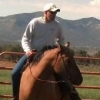All Activity
- Past hour
-
Coming from a flatbed machine, I like that the goods being sewn are easier to see (by virtue of being up higher.) The reverse lever is quite stiff to move. Perhaps I bought a heavier duty machine than I needed. I like how easy it is to change stitch lengths. As long as you press down just a bit on the reverse lever to take the weight off the cam, that is. I love the long stitches it can make. It's advertised as doing 9.5mm stitch lengths but so far for me it does 8.5mm going forward, and 9.0mm in reverse. (Planning to adjust that soon so it's the same both directions.) The flat plexiglass top it came with I have not used yet...it sits about 3mm too high, but I think I just need to file/grind the plate on it to bring it down. It does have a bobbin winder on top, but it winds slowly when your machine is set up to stitch slow. I'd like to get in the habit of winding bobbins for other colors while I stitch to get two for one, but so far I still use an electric bobbin winder instead. It has been convenient to be able to fit larger things under the machine without having to bend the goods as much. The downside here is the weight of the material seems to want to pull themselves off and too the left, so if I'm not careful with flexible materials my reverse stitches at the end of a seam go somewhat sideways instead of straight back over the previous stitches. I guess that's what flatbeds are good for...keeping everything flat and neutral. It came missing two screws: the screws that hold the extension bar for the foot lift pedal to the regular lift bar. The factory says they are an odd size, like #12-24 I think. I used some smaller screws instead and put lock nuts on the other side. The crate arrived with a bit of damage, but only to superflous things like the table legs were squished slightly so that the plastic caps don't quite fit on. It's louder than the pfaff 545 was, and it makes a singing sound when the middle toe lifts. I tracked this down to the return spring for the middle toe rubbing against the cast steel block that the needle bar slides through. Even though it's oily, it still "sings".
- Today
-
friquant started following JiangLong 341
-
As much as I love the Pfaff 545, half of the projects I attempt find me wanting to be able to tilt the workpiece away from the machine head. So on March 25 I ordered a JiangLong 341 through alibaba (with a flatbed attachment so I can still have "flatbed style" but also have the cylinder arm for 3-dimensional projects.) On May 25 the crate arrived with the head unit, servo motor, table, and some accessories. Here are some photos after getting it set up.
-
.thumb.jpg.6e903dd66163ad5672f00f144058c571.jpg)
Adler 167 - Timing Belt Replacement
Northmount replied to Constabulary's topic in Leather Sewing Machines
Some photos of your machine showing the details you are asking/commenting on would be helpful to get you answers. -
Is this a machine I can use for leather? MA2457R-A1
kgg replied to isaac45isaac's topic in Leather Sewing Machines
From the information I was able to find it is a zig zag drop feed machine made for fabric. Here is a pdf of the Instruction manual. kgg CONSEW+2457R-1A+INSTRUCTION+MANUAL.pdf - Yesterday
-
NEver had glue "bleed through" leather. 🤔 But if it's on the surface, you can try to remove it by lightly dragging an art gum eraser to try to lift it off. It will come off the grain side, just have to be careful not to mar the surface. TO BE CLEAR, i'm not talking about RUBBING as in like youre "erasing" it... just trying to LIFT the glue from the leather, not embed it.
-
Adler 167 - Timing Belt Replacement
Ortholad replied to Constabulary's topic in Leather Sewing Machines
Reviving this topic again! I tried to follow this procedure to replace an almost-parted timing belt on an Adler 67 (?) that we have been successfully using for 35 years without fail. Unexpectedly, attempting to wedgethe bearing out caused that flange to separate from the bearing, so the bearing is still in the casting. Before I take it offline ( it still works fine until that belt fully splits) I have a few questions for the experts; 1) Our machine looks just like the one in this discussion, but the Adler/dunkoff website has partslist/exploded drawings for the Adler 67 where the bearing does not look like this one. Is it possible I have a different model? (No builder plate that I have found) 2)Can a new bearing be purchased? Does anyone have a machine they are parting out? 3)Is there anyone who has a drawing of this bearing that has dimensions and tolerances so I can have a local machine shop make on from oilite bronze or other bearing metal? At this point I think I can break it loose by heating it and knocking the remains inward with a punch, then maybe drilling and tapping a pair of long screws to mount a bar to and using a gear puller against the end of the shaft? Anyone else have advice or warnings for me. Martin Santa Rosa CA -
Ortholad joined the community
-
I did a bit of research on hide glue and Chuck is right, it's primary use is for woodwork. It is water-soluble and not considered a permanent-bonding glue as joints that are glued with it can be opened up with heat and moisture, which would seem to make it unsuitable for leather projects as you don't want your work falling apart if it gets damp! The fact it is water-soluble could account for it migrating easily through the leather and interfering with dye absorption. In short, it doesn't appear to be a good choice for leatherwork.
-

Is this a machine I can use for leather? MA2457R-A1
dikman replied to isaac45isaac's topic in Leather Sewing Machines
Your google-fu is strong, Al, when I searched the Consew site I got zip! My take from looking through the parts list is that it's a high speed garment machine, so not really suitable for leather. -
File too large and not supported. Don't know how you managed to load this file. Post it on YouTube and provide a link to it here.
-
AlZilla started following Is this a machine I can use for leather? MA2457R-A1
-

Is this a machine I can use for leather? MA2457R-A1
AlZilla replied to isaac45isaac's topic in Leather Sewing Machines
Here's a link to a parts list: https://consew.com/Files/112347/PartsBooks/2457R-1A.pdf It shows optional cams for funky stitches, so if doubt it's heavy enough for the kind of leather we sew around these parts. -
Sorry. Best of luck. kgg
-
The question is for feedback on the Tippmann. Whether a 15 ton is sufficient or not is irrelevant if the press indeed does not perform the 15 tonnage. And if it does not, then I would be hesitant to ask the supplier for their input. But yes, I suppose I could mail the dies and material in for a trial run.
-
The question should be will a 15 ton press be sufficient to handle what you need. I would get the suppliers to do the calculations for you. Once you have that answered then you will be better able to determine what the best machine for your needs and budget would be regardless of supplier. kgg
-
I'm in the market for a 15 ton press whether the Tippmann or a standard hydraulic clicker. Anyone have any feedback on the Tippmann? I've read a few statements that claim it does not hold to a true 15 tons of pressure, but again those are far and few between. Tippmann claims it can cut 1/2" leather. I think the thickest I would be cutting is 1/4", but those will be very intricate 30" dies with up to fifty(50) 1/16" to 1/8" punch holes. Not here to bash the name, but need transparent feedback on actual performance.
-
Without a photo people are just shooting in the dark. I don't know of any data base of PFAFF machines listing date of manufacture. PFAFF doesn't seem to have kept recorders like Singer. The best anyone can do is view a photo and from certain features say it is an old casing or new casting or by the colour which ranged from everything from diaper stain brown to off white. Except for the new PFAFF manuals appear to change very little over time and when they did they changed the model number. Post a photo for better help and a detail of the information on the nameplate. kgg
-
Trox started following What are these 2 machines called?
-
Hi, is it your machine in the video? You are wild Harry? I'm looking for a wide guide like the one on you skiver. That roller foot also looks good, I got one that came with my machine but it's pretty worn out. Where did you get this. Thanks Tor
-
.thumb.jpg.6e903dd66163ad5672f00f144058c571.jpg)
Is this a machine I can use for leather? MA2457R-A1
Northmount replied to isaac45isaac's topic in Leather Sewing Machines
Product photo doesn't display. -
not squashing detailed carving in a stitching pony
BlackDragon replied to LakeOtter's topic in Sewing Leather
I'm not a big fan of stitching ponies myself, although I do use one from time to time. I've stitched my belts, 10oz vegtan and 5oz liner, both with a pony and without and I prefer not using a pony. Now if I hand stitch a wallet I may use a pony but usually I don't. One of my contentions with the pony is I have to continuously tilt my head to see the one side or the other. I have neck issues so this constant back and forth causes neck pain and headaches. -
isaac45isaac joined the community
-

not squashing detailed carving in a stitching pony
chuck123wapati replied to LakeOtter's topic in Sewing Leather
notice the thickness? not so easy on thicker stuff!




